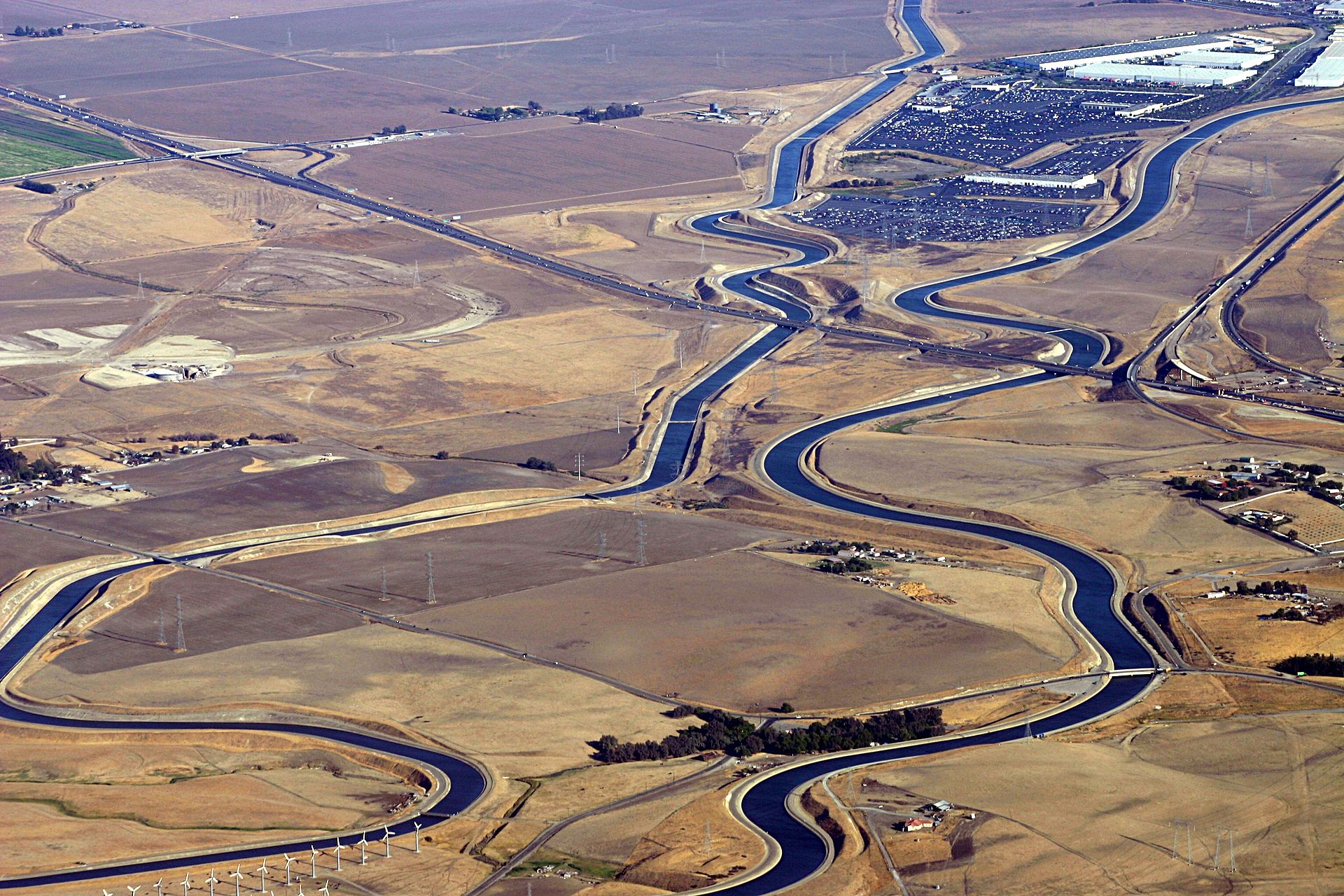In The Sun Also Rises, one of Ernest Hemingway’s dissolute characters was asked how he went bankrupt. “Two ways,” he answered. “Gradually, then suddenly.”
California’s day of reckoning has come in a similar way. Heavy agricultural use of water has gone on for decades, even as the annual snowfall in the Sierra Nevada Mountains has slowly deteriorated, accelerating during the drought of the past four years. Then on March 12, Jay Famiglietti, a senior water scientist at NASA’s Jet Propulsion Laboratory and a professor at the University of California-Irvine, announced in a controversial Los Angeles Times op-ed that California had only one year of water stored in its reservoirs.
If we use enough water, we can even make deserts bloom, suburbia shocking shades of green, and golf courses lush refuges—all the bizarre modern oases that define Southern California.
The situation may not be as bleak as Famiglietti initially implied. Estimates of statewide snowpack range from just six to 12 percent of normal levels, but reservoirs will be replenished by snow and rainfall. In addition, the state can tap other sources, including groundwater. Nonetheless, three weeks after Famiglietti’s op-ed appeared, Governor Jerry Brown issued an executive order mandating water reductions of 25 percent in the state’s cities and towns. Ninety percent of California’s residents will be affected.
These events make plain what has always been the case. Water is not a magically appearing substance. We cannot count on unfailing, limitless supplies of water, and water is not an absolute right, even though we often treat it as such. Access to clean, reliable, plentiful sources of water is taken for granted throughout the industrialized world, in ways that would be marvelous to a citizen of Sudan or Bolivia.

Complex technological systems like aqueducts and reservoirs mediate our relationships with water. They usually keep the complicated pathways through which water flows out of sight. Yet hydraulic infrastructure epitomizes how technologies are always connected to natural systems like rivers and the weather. Technological systems are really at the mercy of ecological systems, much as we might forget this.
We turn on the tap, hop in the shower, start the sprinkler, and wash clothes and dishes—generally all without thinking about where our water comes from, or if it will flow at all. Many mundane habits in our daily lives—from bathing to making dinner—are dependent on dams, reservoirs, pumps, and canals both big and small. Huge pipes divert water from distant places—the Hetch Hetchy and Owens Valley—to sprawling megalopolises like San Francisco and Los Angeles. Municipal water networks run underground, invisible beneath our feet. The very tip of this vast system shows up in our homes and workplaces as taps, but we forget about them—until they fail.
Technological systems are really at the mercy of ecological systems, much as we might forget this.
This lack of awareness gives us a huge and ultimately dangerous illusion of control over the natural world. Enormous dams like Hoover and the nation’s tallest, Oroville on California’s Feather River, seem to symbolize our successful conquest of nature. Lengthy canals and pipes suggest that tens of millions of people can indeed live in arid regions. If we use enough water, we can even make deserts bloom, suburbia shocking shades of green, and golf courses lush refuges—all the bizarre modern oases that define Southern California.
But these technologies are never foolproof. Hydrologic processes, weather patterns, snowpack, and El Niño cycles all affect how much—even if—water will make its way into the extensive hydraulic infrastructure upon which California’s society and economy is utterly dependent. Moreover, scientists increasingly believe climate change has already altered, and will continue altering, these “natural” processes in ways that make our reliance on the environment even more precarious.
Seeing water infrastructure as only technological is hubris. We forget the envirotechnical foundation of California at our peril. This insight may bring us a bit closer to places like Sudan or Bolivia, where such luxuries as reliable water are never assumed and rarely guaranteed. But even more importantly, what we’re talking about here is not just the envirotechnical basis of California, but the entire industrialized world.





